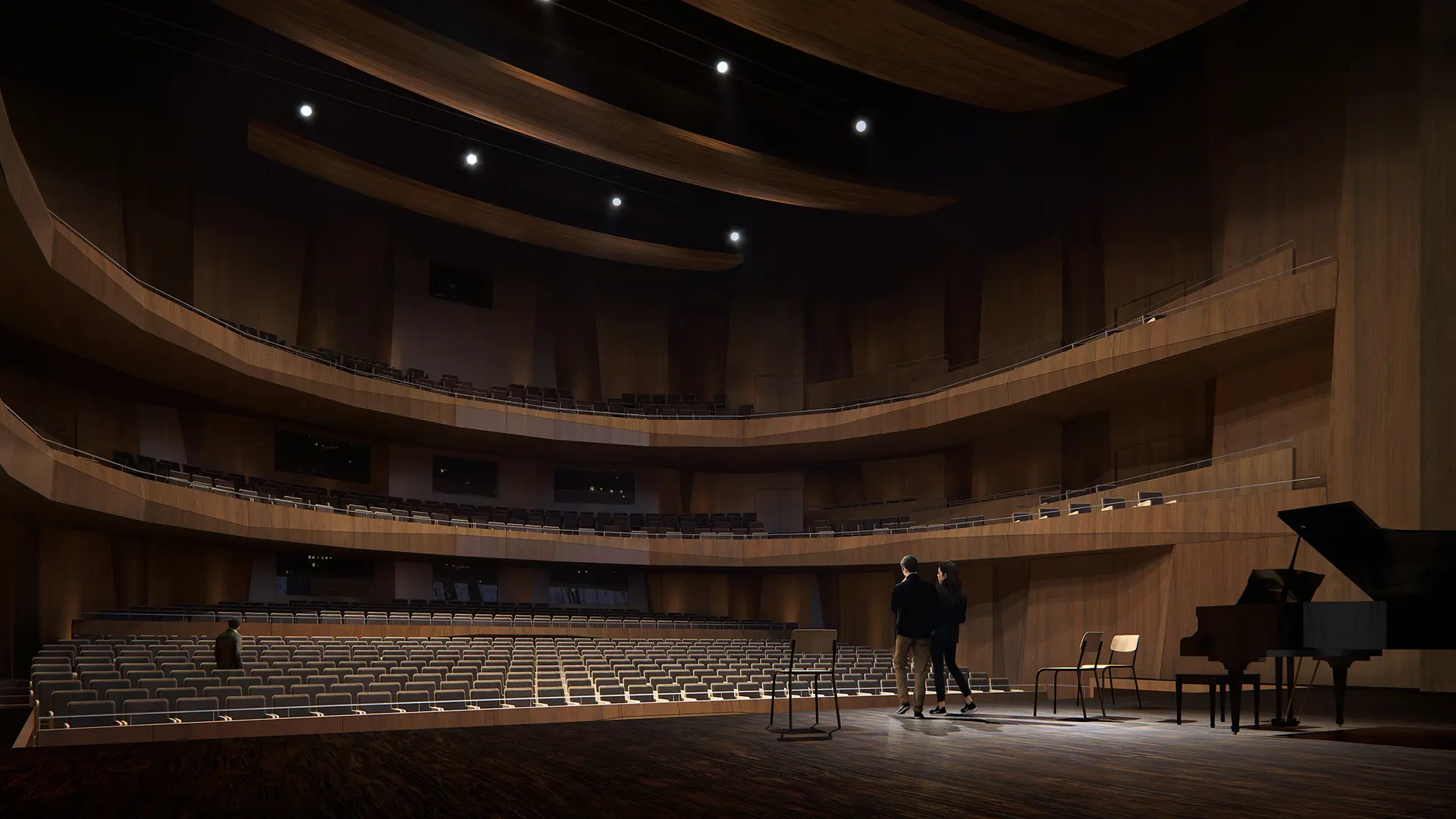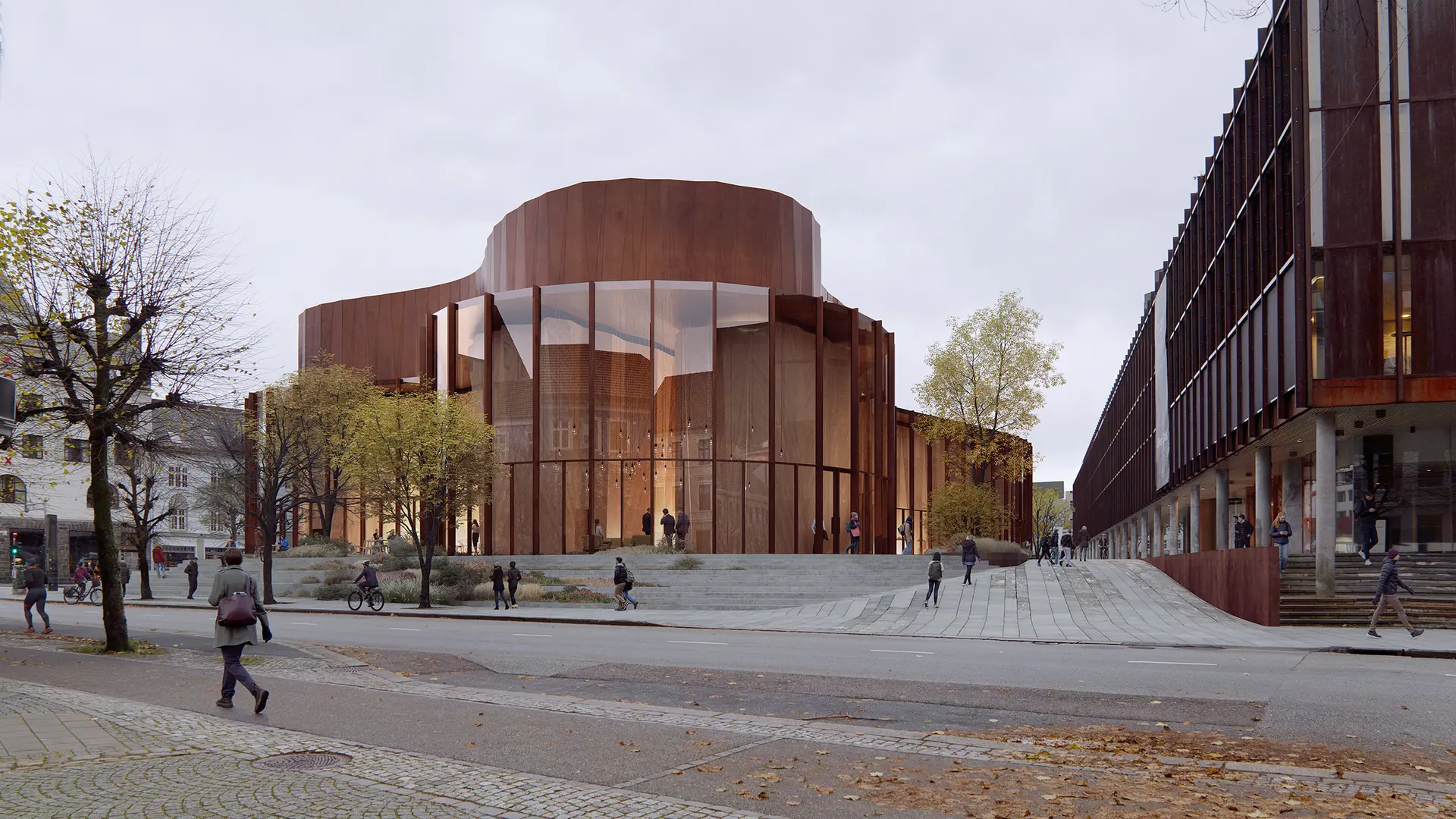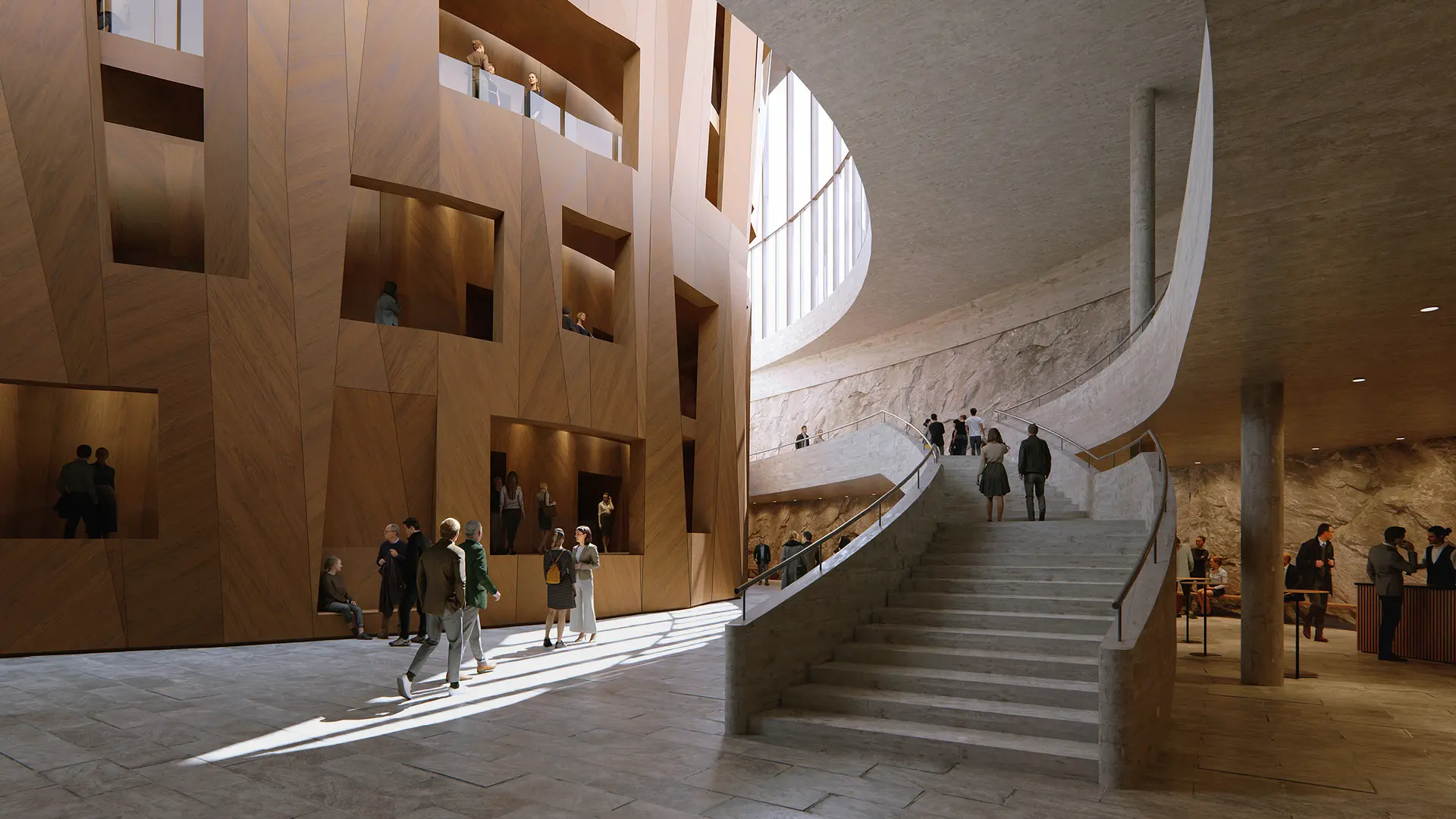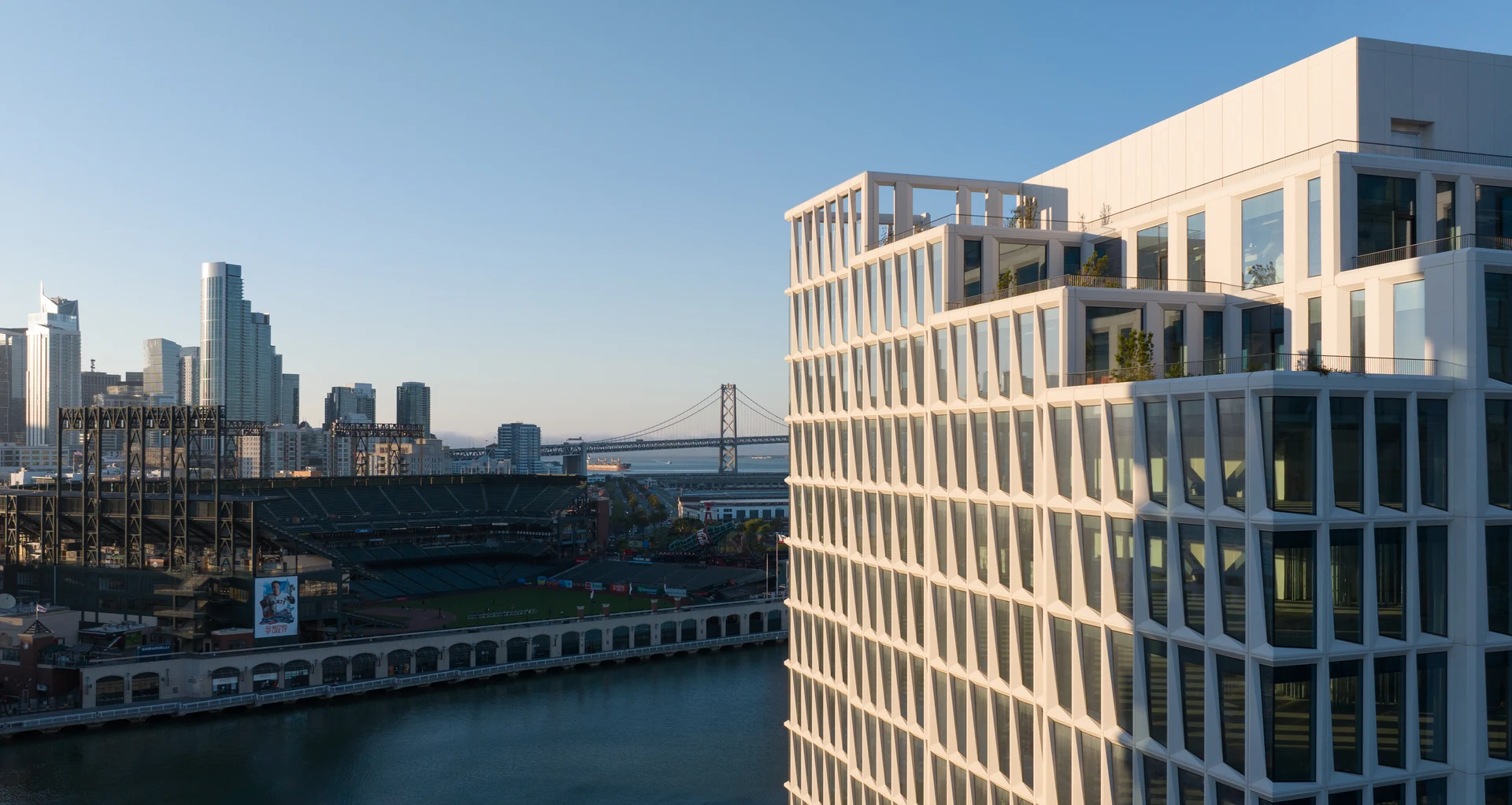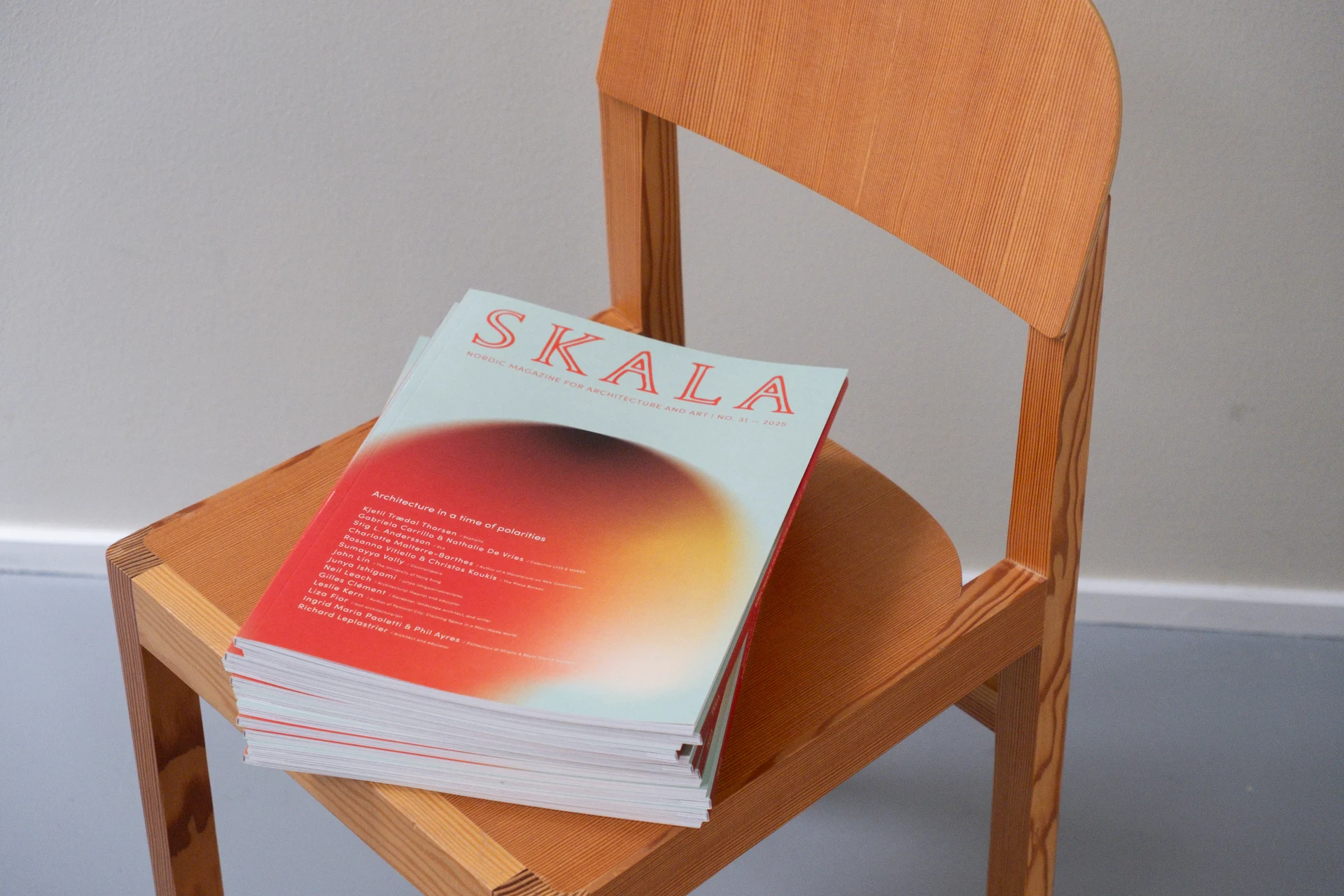We have won the international design competition for new arts center in Bergen, Norway
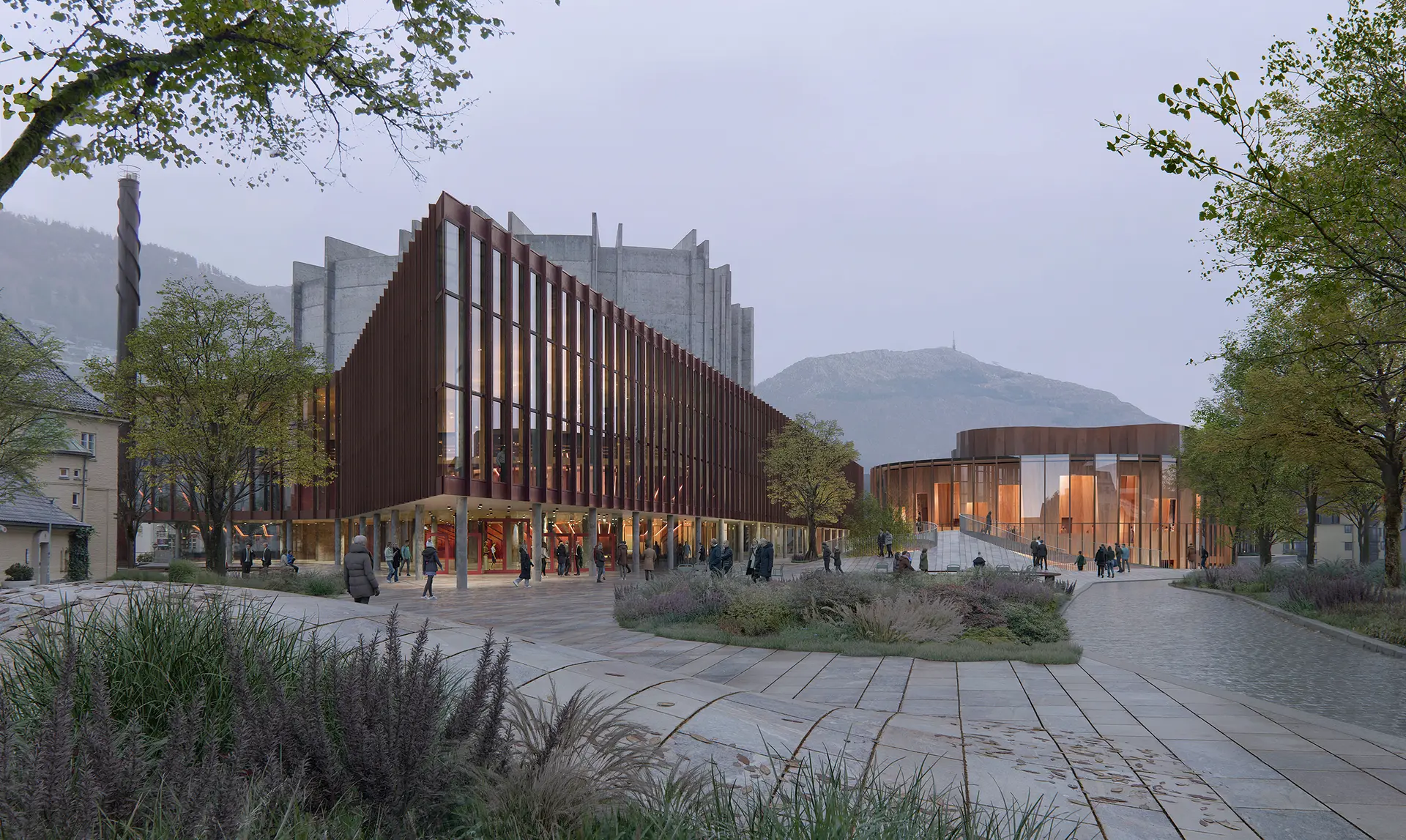
By Zoey Kroening
Creating a state-of-the-art concert hall in western Norway, Grieg Quarter will blend city, culture, and nature to become historic Bergen’s inviting new destination. The winning proposal will expand the city’s creative and natural landscape, the new performing arts and exhibition centre invites for seamless transitions between indoor and outdoor, and the vibrant green plaza becomes an intimate communal space.
Contact
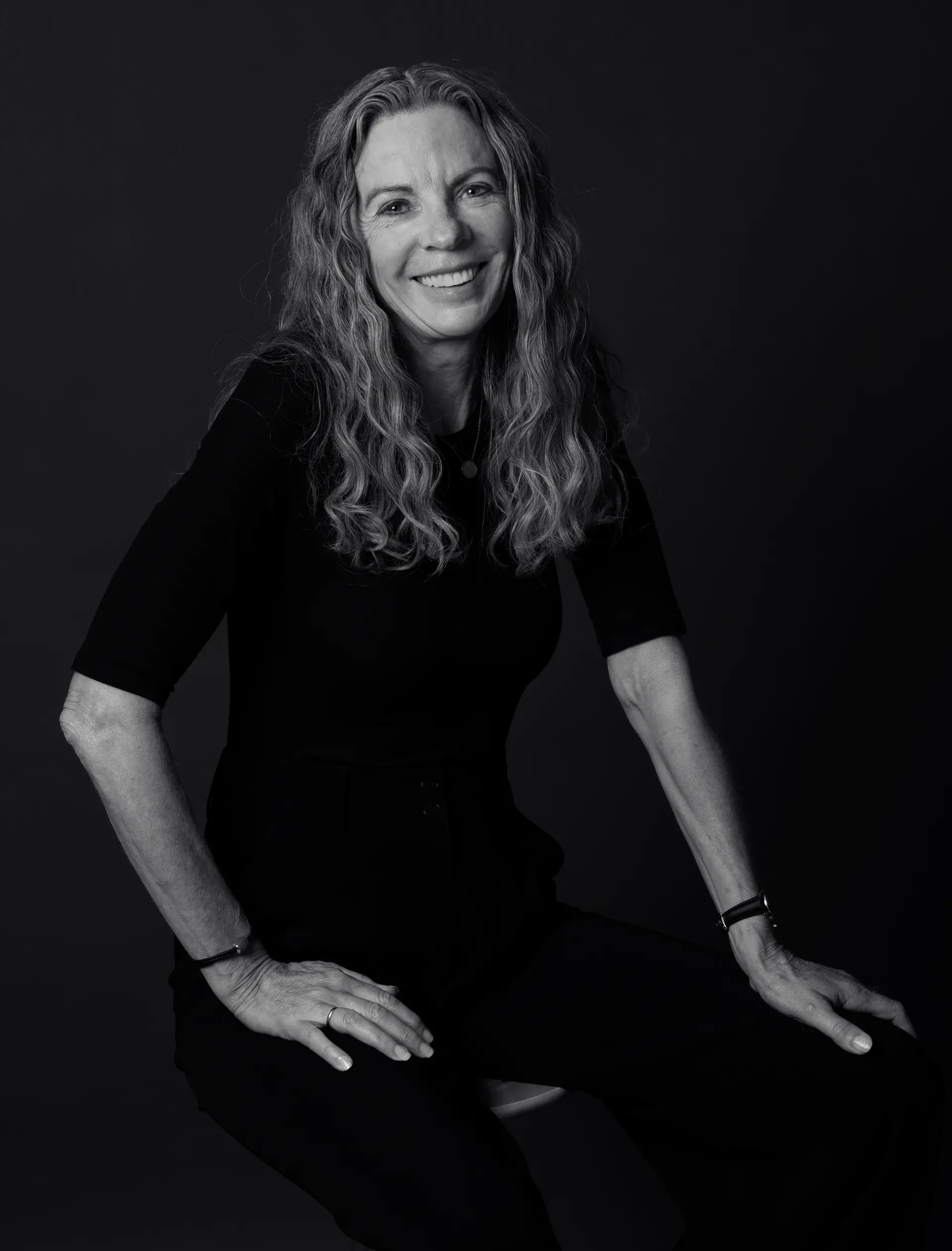
Division leader, Landscape Norway
The Grieg Quarter competition featured 32 participants, with five shortlisted finalists. Among the competing teams were Kengo Kuma & Associates and Mad Architects, Nordic Office of Architecture, Snøhetta, and Zaha Hadid Architects.
Bordering Bergen’s historic center, our winning proposal, ‘Kontrapunkt’, is a 17,500 m² music and conference hall featuring a theater and orchestra pit, an exhibition venue, a café, multipurpose rehearsal spaces, and a revitalization of the surrounding outdoor square.
An addition to the existing Grieg Hall, initially crafted by the Danish architect Knud Munk, The Grieg Quarter will establish a cultural venue, elevating the city's artistic character while preserving the rich identity of the present building. This represents a collaborative effort to enrich the city's cultural infrastructure, with urban centers investing in initiatives to enhance their appeal and catalyze urban progress.
“With the winning project Kontrapunkt, Grieg Quarter will emerge with an architectural design and functionality that will revitalize Bergen. This innovative design will not only rejuvenate the expansive area adjacent to Grieg Hall, but also cultivate a dynamic urban hub. Its visually captivating and inclusive layout, coupled with the Music Theater's exceptional acoustics, will undoubtedly enhance the city's cultural landscape," said the competition jury.
The new concert hall will encourage unrestricted movement, exploration, and seamless transitions between indoor and outdoor spaces. The hall will be built to accommodate 1,000 spectators alongside an additional 145 seats extending over the orchestra pit.
Under the northern expanse of Edward Grieg’s Square, new exhibition areas spanning 3570m² will offer a dynamic canvas for cultural exploration and engagement. Integrated into the urban fabric, the foyer will offer dual access points— through the current entrance at the Grieg Hall's first floor and a new entryway from Edward Grieg’s Square — forging connections with the city. Along Strømgaten, a sunlit café, complemented by a sheltered outdoor space, will offer an inviting ambiance.
Adjacent to the common areas, will be a versatile rehearsal room, designed not only for rehearsals but also for multifaceted utilization, transforming into a venue for performances, conferences, and events. Featuring dimensions mirroring those of the main stage, 16x16 meters, and furnished with a telescopic amphitheater, the room will accommodate 140 seats.
Connected landscape
With its close connection to the mountains and water, Grieg Quarter’s outdoor square will feature local fauna and a water management strategy to support the local ecosystems and everyday visitors.
The square is conceived as an undulating landscape creating a contrast to the existing Grieg Hall's sharp, straight lines. The existing pavement is pulled all the way to the facade to create an inviting carpet that brings together culture and city life.
This recent triumph contributes to our portfolio of cultural projects including Harpa Concert Hall, World of Volvo and Moesgaard, along with ongoing projects such as the Canberra Theatre Centre currently in development.
Grieg Quarter is expected to complete in 2030/31, and the competition was done in collaboration with Grieghallen Udbygging as, Charcoal Blue, AIX, Thornström Brookfield Arkitekter, Rambøll, and Schjelderup & Gram and with support from the Grieg Foundation. Henning Larsen is delivering architecture, landscape architecture, urban design, and sustainability strategy for the project.
01/03
